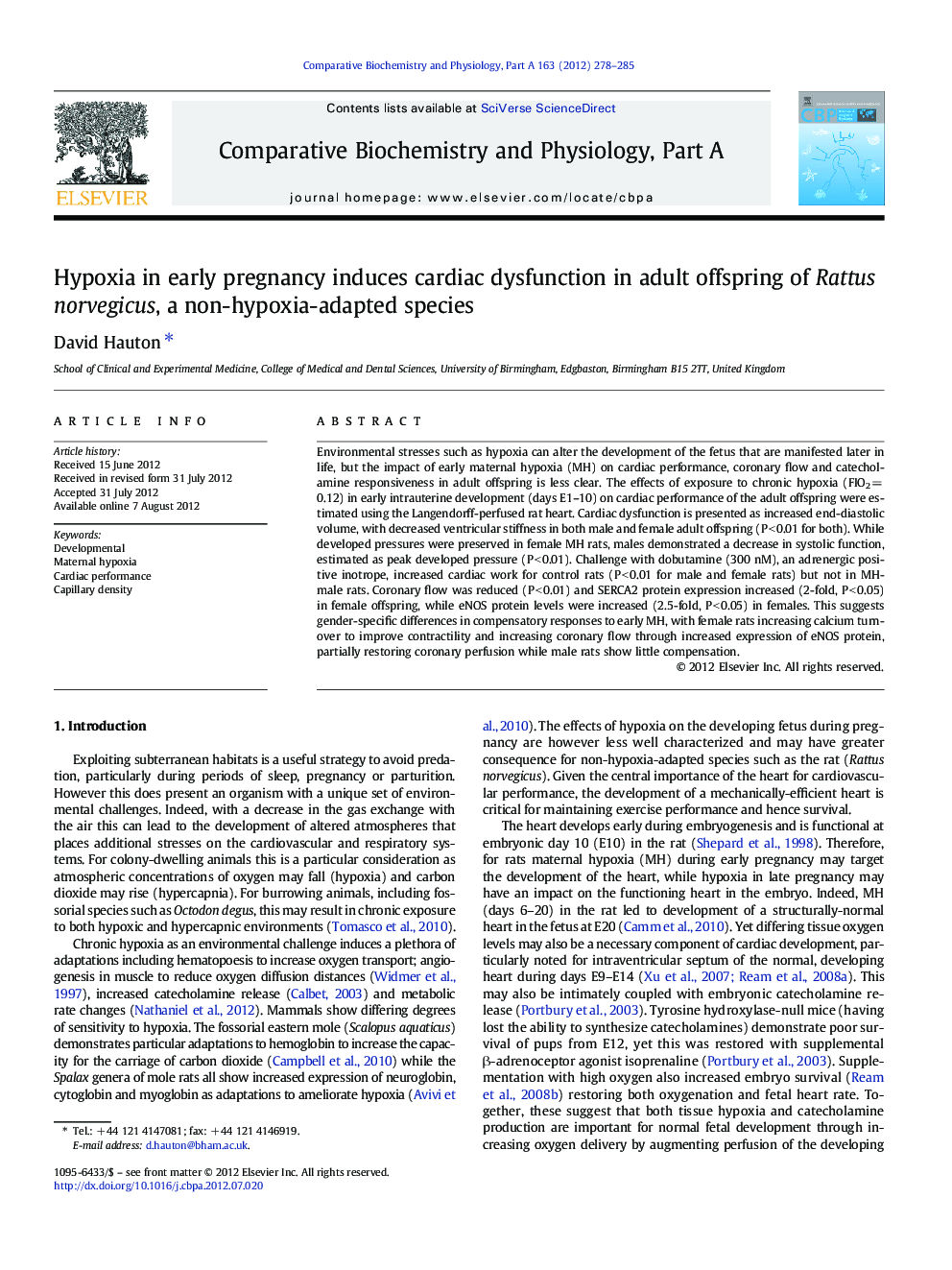| Article ID | Journal | Published Year | Pages | File Type |
|---|---|---|---|---|
| 8318690 | Comparative Biochemistry and Physiology Part A: Molecular & Integrative Physiology | 2012 | 8 Pages |
Abstract
Environmental stresses such as hypoxia can alter the development of the fetus that are manifested later in life, but the impact of early maternal hypoxia (MH) on cardiac performance, coronary flow and catecholamine responsiveness in adult offspring is less clear. The effects of exposure to chronic hypoxia (FIO2Â =Â 0.12) in early intrauterine development (days E1-10) on cardiac performance of the adult offspring were estimated using the Langendorff-perfused rat heart. Cardiac dysfunction is presented as increased end-diastolic volume, with decreased ventricular stiffness in both male and female adult offspring (PÂ <Â 0.01 for both). While developed pressures were preserved in female MH rats, males demonstrated a decrease in systolic function, estimated as peak developed pressure (PÂ <Â 0.01). Challenge with dobutamine (300Â nM), an adrenergic positive inotrope, increased cardiac work for control rats (PÂ <Â 0.01 for male and female rats) but not in MH-male rats. Coronary flow was reduced (PÂ <Â 0.01) and SERCA2 protein expression increased (2-fold, PÂ <Â 0.05) in female offspring, while eNOS protein levels were increased (2.5-fold, PÂ <Â 0.05) in females. This suggests gender-specific differences in compensatory responses to early MH, with female rats increasing calcium turnover to improve contractility and increasing coronary flow through increased expression of eNOS protein, partially restoring coronary perfusion while male rats show little compensation.
Related Topics
Life Sciences
Biochemistry, Genetics and Molecular Biology
Biochemistry
Authors
David Hauton,
